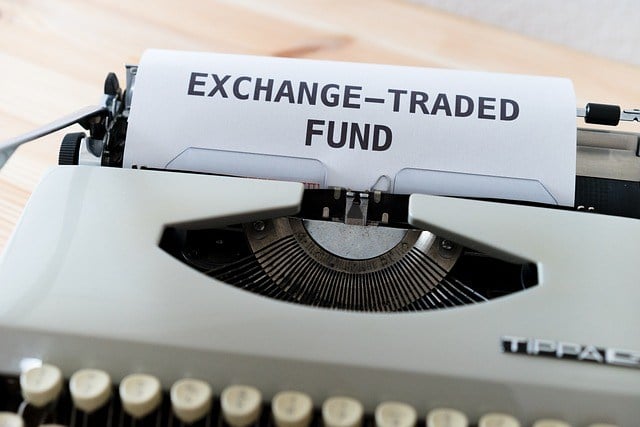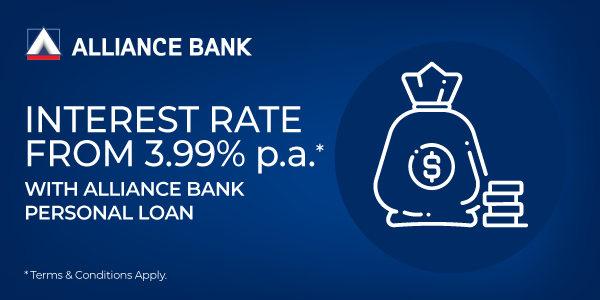Tradeable Products: Overview And Examples
From stocks, ETFs, REITs and Warrants, find a tradeable product that mirrors your investment objectives and strategies.
What do tradeable products mean?
Tradeable products can be regarded as the layman's term for trading or financial instruments. They are essentially a group of different assets and/or contracts that can be purchased or sold in the stock market.
There are variations of these trading instruments and some may be more popular than others like stocks and exchange-traded funds (ETFs), for example. Investors trade these instruments to potentially generate profits in the long run or short term – depending on their investment objectives and goals.
Before we delve into the examples of tradeable products in the trading world, you need to bear in mind that trading is a very risky business. So make sure you gear yourself up by doing thorough research and consulting with professionals before you start engaging in trading activities.
Examples of tradeable products in a stock market
Get to know some of the common examples of tradeable products that are being traded on almost all of the stock markets in the world.
Stocks

In essence, stocks or also known as “equities”, represent ownership in a company. They are often issued by companies in the hope of raising funds from the general public for many reasons; it could be to expand their business or take up new projects or even pay off debts, for instance. When you buy these stocks, you become a shareholder or part-owner of the said company which in most cases, gives you certain rights to vote on certain company matters, including the potential of getting dividends from the company’s profits.
Oftentimes, investors buy stocks with the expectation that their value will increase over time. But more often than not, the value of a stock can go up or down depending on various factors such as the company’s performance, industry or market trends and economic conditions. If the company does well and its prospects look positive, more people may want to buy its stock, driving the price up. On the other hand, if the company faces challenges or if there's negative news, the stock price may decline.
In the US, they have a “blue-chip” type of stock which mainly comprises the largest and most established companies on the stock market, and they are known for their stability as well as long-term growth potential. Some examples of “blue-chip” stocks include Apple, Google and Johnson & Johnson. Meanwhile, Maybank, Public Bank, and Tenaga Nasional Bhd are examples of “blue-chip” stocks in Malaysia.
It's important to note that investing in stocks carries risks. The value of a stock can fluctuate, and there is no guarantee that you will make money. It is advisable to research the company, understand its financial health, and consider your own investment goals and risk tolerance before you engage in trading stocks.
Exchange-traded Funds (ETFs)

Similar to individual stocks, ETFs are a type of investment traded on stock exchanges. They consist of a collection of different assets in one “basket” and are designed to track the performance of a specific index such as the S&P 500 or a group of assets like stocks, bonds, or commodities.
For beginners, ETFs are known to be one of the popular and best choices of trading instruments. By investing in ETFs, you as an investor can gain exposure to a diversified portfolio of assets, thus helping you spread the risks and lessen the impact of poor performance from any of the underlying assets in the “basket”.
Like any investment, ETFs come with risks. While it offers diversification, the value of an ETF can still go up or down based on the performance of the underlying assets. Therefore, you must understand how each of the assets works and best consider your investment goals and risk tolerance as well.
Nevertheless, if you’re keen to invest in ETFs, some of the popular ones that you can research include the SPDR S&P 500 (SPY), Vanguard S&P 500 ETF (VOO) and Invesco QQQ Trust (QQQ) – these are examples in the US market.
Real Estate Investment Trusts (REITs)

REITs are essentially a company, association, fund or trust that gains profits by owning and managing income-producing real estate across various types of property which typically include shopping centres, hospitals, office towers/buildings, hotels and others.
According to Bursa Malaysia, the management of a REIT is required by law to distribute at least 90% of their taxable income to shareholders in the form of dividends. This way, investors have the potential to get regular income, capital appreciation, and diversification in their investment portfolios.
There are three main types of REITs:
- Equity REITs own and operate income-producing real estate properties and generate most of their income from rent collected from tenants.
- Mortgage REITs invest in real estate debt by originating or buying mortgages, as well as mortgage-backed securities, and generate income from the interest collected on these mortgage loans or mortgage securities.
- Hybrid REITs invest in a combination of real estate properties and real estate debt.
You can engage in trading REITs on stock exchanges similar to stocks or ETFs above. However, it is important to note that several factors can influence the value of a REIT’s share – from the real estate market performance to the interest rates and the overall economy – there’s no guarantee of earning a profit. Therefore, research the specific REIT, understand its portfolio of properties, assess the management team's expertise, and consider your own investment goals and risk tolerance before investing.
Warrants

In simple terms, a warrant is a financial instrument that gives the holder the right to buy a company's stock at a predetermined price (also known as an exercise price or strike price) within a specified period.
For example, if the warrant has a strike price of RM1,000 and the current market price of the stock is RM5,000, the holder can exercise the warrant to buy the stock at RM1,000 and potentially sell it for a profit. It's like a special coupon that allows you to purchase shares of a company in the future at a fixed price.
However, warrants come with an expiration date and you will need to exercise them before the due date comes. Otherwise, should you exercise the warrant past the expiration date, there will be no more value to it and you will lose the opportunity to buy the stock at the predetermined price.
Similar to other examples of tradeable products mentioned above, the value of a warrant is highly dependent on various factors such as the price of the underlying stock, the time remaining until expiration, and market conditions.
Warrants can provide potential opportunities for investors to profit if they believe the company's stock price will rise in the future but they also come with risks. If the stock price does not reach or exceed the warrant's strike price, the warrant may expire worthless, resulting in a loss for the warrant holder.
Lastly, warrants can be a complex financial instrument and thorough research, a deep understanding of the terms and conditions, and the risks involved are highly advisable before you start investing in warrants.
Tips to choose tradeable products that suit your investment goals
When choosing a tradeable product, we believe that there’s no such thing as the “perfect” one. Trading in general comes with great risks and you need a lot of knowledge, practice and experience to succeed. But to maximise as many profits as you can, you should first assess your investment goals, risk tolerance, trading style and cost evaluation. Here are some tips to help you make an informed decision.
Define your investment goals
Determine what your investment objectives are: is it for capital appreciation? Or is it for diversification, income generation or hedging against risks? You should know that different trading instruments or tradeable products are designed to meet specific goals. For example, stocks can offer long-term growth potential, while ETFs can offer you diversification thus the ability to spread the risks associated with investing in individual stocks or commodities, for instance. Clarifying your goals will help narrow down your options.
Assess your risk tolerance
Evaluate your risk tolerance level, as some tradeable products carry higher risks than others. Warrants, for instance, carry higher risks compared to stocks. While stocks carry their own set of risks — factors such as recessions, interest rate changes, geopolitical events, or shifts in investor sentiment can impact the overall stock market and individual stock prices — warrants have additional risks associated with their time-limited nature, leverage, and dependency on the underlying stock. The potential for higher losses and increased complexity make warrants generally riskier compared to investing in individual stocks.
REITs, on the other hand, are directly influenced by the performance of the real estate market. Factors such as changes in property values, rental demand, interest rates, and economic conditions can impact the value of REIT investments. A downturn in the real estate market can lead to declines in REIT prices.
On top of that, the risks associated with ETFs can vary depending on the underlying assets or indexes they track. If the market or a particular sector represented by the ETF experiences a decline, the value of the ETF can decrease. Not to mention, some ETFs may have lower trading volumes, making it difficult to buy or sell shares at desired prices. This liquidity risk can potentially lead to larger bid-ask spreads or delays in executing trades.
Evaluate costs
Assess the costs associated with trading a particular instrument. Transaction fees, commissions, spreads, and financing charges can vary across different instruments and financial intermediaries. Consider how these costs will impact your overall trading performance and choose instruments that align with your budget.
Consider liquidity
Liquidity affects how quickly you may enter or leave a position without materially changing the market price. The bid-ask spreads and execution are often narrower and more streamlined for more liquid products, such as prominent stocks or currency pairings. Illiquid instruments may be more difficult to trade and more expensive overall.
Start small and gain experience
It's often wise to start with a small investment and gain experience before committing significant capital. Consider paper trading or using demo accounts provided by brokers to practice and familiarise yourself with different instruments. This approach allows you to learn without risking real money.
Remember that there is no one-size-fits-all approach when selecting trading instruments. Your preferences and circumstances will dictate which instrument suits you best. Regularly review your investment strategy and adjust your portfolio as needed to align with your evolving goals and market conditions.

















